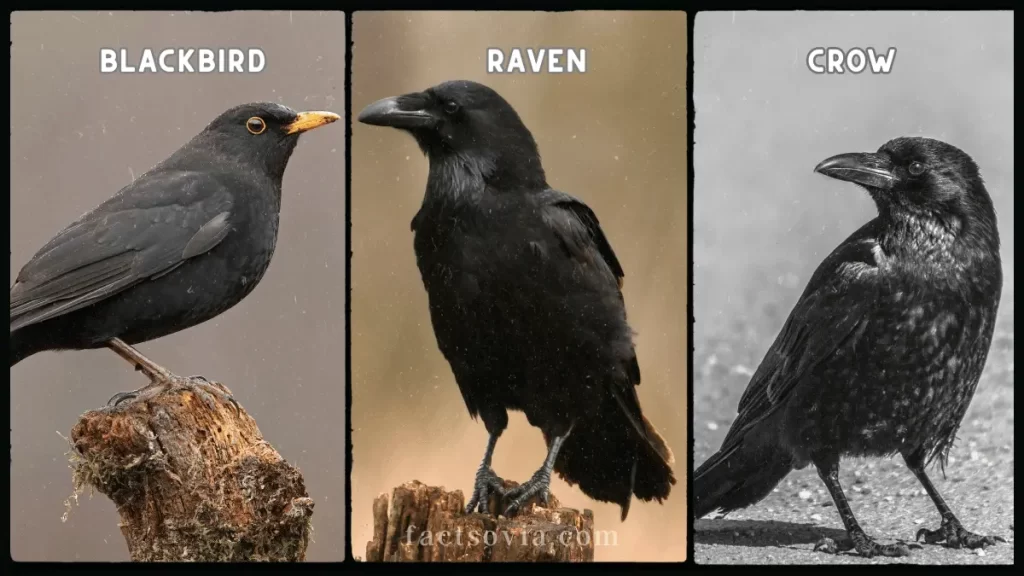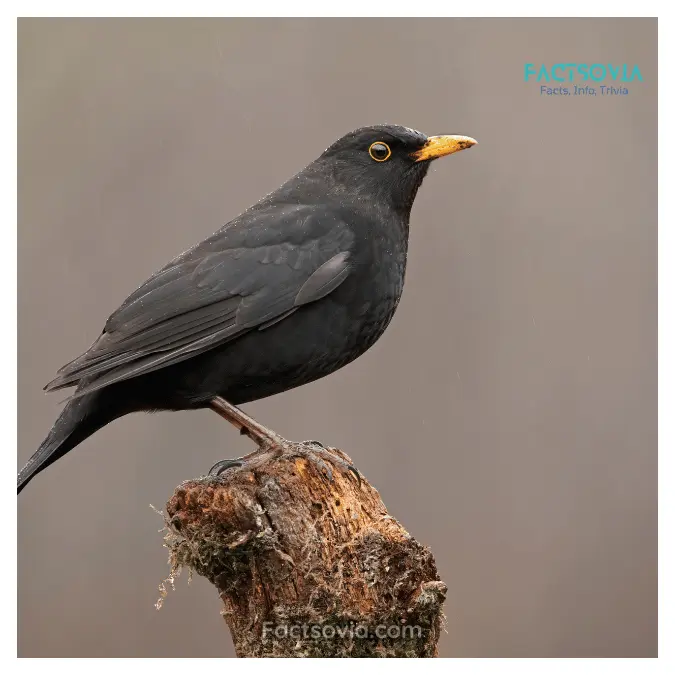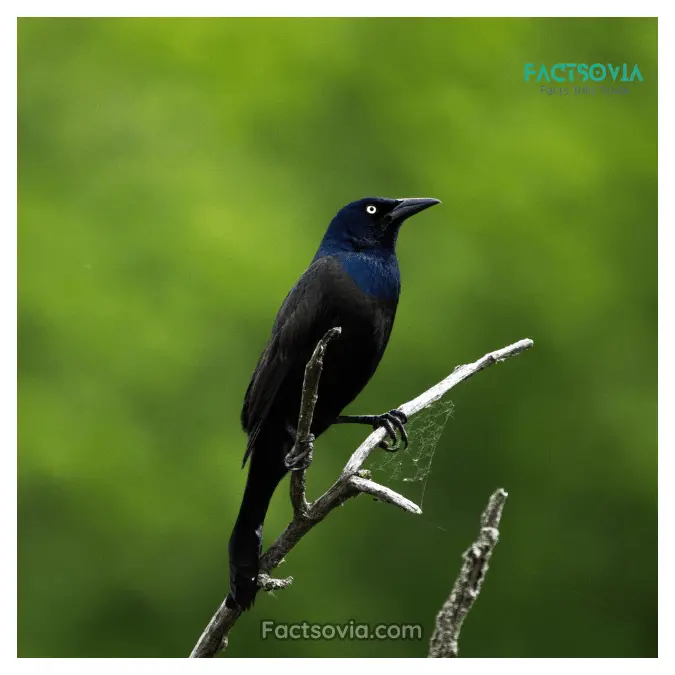We use affiliate links to run our site. When you buy through links on our site, we may earn an affiliate commission, without any added cost to you. Learn more
Blackbirds, crows, and ravens are some of the most commonly seen birds in North America. While they may look alike at first glance, there are distinct differences in their physical appearance, habitat, feeding preferences, vocalizations, and behaviors.
In this comprehensive guide, we’ll explore these differences in depth and provide you with the tools you need to identify these birds with confidence.
Key Takeaways:
- Blackbirds, crows, and ravens have distinct physical and behavioral characteristics.
- By understanding their differences, you can learn to identify each species.
- These birds play important roles in the ecosystem and have intriguing histories in folklore and mythology.
- Magpies and grackles are similar species that can often be confused with blackbirds, crows, and ravens.
- With this guide, you’ll gain a deeper appreciation for these avian wonders and their place in the natural world.
Differences in Appearance
Blackbirds, crows, and ravens have distinct physical characteristics that set them apart. When it comes to size, blackbirds are the smallest of the three, measuring about 8-11 inches in length. Crows tend to be larger, ranging from 16-21 inches, while ravens are the biggest, measuring up to 27 inches in length.
Aside from size, each species has unique features that make them easy to recognize. Blackbirds are usually all-black with yellow eyes, while crows have black bodies with feathers that have a purple or blue sheen.
Ravens, on the other hand, are larger and have a thick bill and a wedge-shaped tail, which is longer and more pointed than that of a crow.
To get a better idea of their physical differences, check out the pictures of crows, Ravens and blackbirds below:

Knowing how to identify these birds based on appearance is crucial in differentiating between blackbirds, crows, and ravens.
Differences in Vocalizations and Sounds
While blackbirds, crows, and ravens may share certain vocalizations, they each have unique sounds that help distinguish them from one another.
Blackbirds are known for their complex and melodious songs. They produce a range of sounds, from whistles to trills, that are often heard during mating season.
Crows, on the other hand, have a repertoire of over 20 distinct calls, each with its own meaning. These calls include the familiar “caw-caw” that is often associated with crows. They also make a variety of other sounds, such as clicks, rattles, and purrs.
Ravens produce a range of calls that are deeper and more guttural than those of crows. Their most distinctive call is a deep, reverberating croak that can carry for long distances. They also make a variety of other sounds, including caws, rattles, and clicks.
By listening carefully to the sounds made by blackbirds, crows, and ravens, you can learn to identify each species with greater ease.
10 Reasons Why Keeping Ravens as Pets is Not a Great Idea
Behaviors and Habits

Blackbirds, crows, and ravens share many behaviors and habits, but they also have distinct differences that set them apart. For example, crows are known for their aggressive behavior and have been observed fighting with blackbirds and ravens over territory and food.
Crows also have a unique behavior of “anting,” where they rub ants on their feathers to spread formic acid and other chemicals throughout their plumage. This may help to control parasites or serve some other purpose that is not yet fully understood.
Blackbirds are known for their distinct tail shape, which is shorter and more rounded than those of crows and ravens. They are also more territorial and will defend their nests vigorously against intruders.
Ravens, on the other hand, are known for their playful behavior and their intelligence. They have been observed playing games, using tools, and even mimicking human speech.
| Blackbird | Crow | Raven | |
|---|---|---|---|
| Tail Shape | Short and Rounded | Square and Fan-shaped | Wedge-shaped |
| Aggressive Behavior | Territorial and will defend nests | Known for fighting with other birds | Less aggressive than crows |
| Playful Behavior | Not as commonly observed | Not observed as frequently as ravens | Known for playing games and using tools |
While crows and ravens may share similar behaviors, they also have some distinct differences. For example, ravens have larger body sizes and longer wingspans than crows, and they are less likely to be found in urban environments. Crows, on the other hand, are more adaptable and can be found in a variety of habitats, including cities and suburbs.
Overall, understanding the behaviors and habits of blackbirds, crows, and ravens can help you better identify and appreciate these fascinating birds.
Raven Vs Crow: How To Easily Tell The Difference Between The Two
Physical Characteristics
One way to distinguish between blackbirds, crows, and ravens is by their physical features. While all three are black in color, their sizes differ. Ravens are the largest, followed by crows, and then blackbirds.
Ravens can reach up to 26 inches in length with a wingspan of 46 inches, while crows range from 16 to 21 inches with a wingspan of 36 inches.
Blackbirds are the smallest, measuring about 8 inches in length and a wingspan of 15 inches. So, ravens are bigger than crows and crows are bigger than blackbirds.
Additionally, crows and ravens have other physical differences. Crows have a squared-off tail, while ravens have a wedge-shaped tail. Ravens also have a larger, more curved beak than crows. These unique traits help differentiate crows and ravens from one another.
Understanding the physical characteristics of blackbirds, crows, and ravens can aid in identifying these birds in the wild.
Habitat and Distribution
Blackbirds, crows, and ravens can be found in a wide variety of habitats throughout the United States.
Blackbirds tend to favor wetlands, marshes, and other areas with plenty of water. They can be found in both urban and rural areas and are known for their distinctive calls.
Crows, on the other hand, are found in a wide variety of habitats, from forests and fields to urban parks and backyards. They are highly adaptable and can thrive in many different environments.
Ravens are typically found in more remote areas, such as mountainous regions and wilderness areas. They are larger than crows and often travel in pairs or small groups.
In general, blackbirds and crows have a wider distribution than ravens. Blackbirds are found throughout the US, except for the driest areas of the Southwest. Crows can be found throughout the US and into Canada, Mexico, and Central America. Ravens are found throughout most of the US, except for some parts of the Southeast and Midwest.
Whether you’re in the city or the wilderness, keep an eye out for these fascinating birds in their natural habitats.
Feeding Preferences

Blackbirds, crows, and ravens are omnivorous birds, meaning they eat both meat and plants. Their diet varies depending on the season, location, and availability of food.
Blackbirds: These birds primarily feed on insects, fruits, and seeds. During the winter, when food is scarce, they turn to berries and other plant matter for sustenance.
Crows: Crows have a diverse diet, consuming everything from fruits and nuts to small animals and carrion. They are known to scavenge in urban areas and are often attracted to garbage dumps.
Ravens: These birds have a similar diet to crows, but they tend to target larger prey such as rodents, rabbits, and even other birds. They are also known to scavenge carrion and will occasionally steal food from other birds.
Blackbirds, crows, and ravens are intelligent birds that have adapted to a variety of environments and food sources. Their resourcefulness and resilience make them fascinating creatures to observe in the wild.
Intelligence and Problem-Solving Abilities
Blackbirds, crows, and ravens are highly intelligent birds that have captivated humans for centuries. Their cognitive abilities have been studied extensively, and scientists have discovered that these birds are capable of problem-solving and critical thinking.
Recent studies have shown that crows and ravens are particularly adept at using tools to obtain food. In fact, they have been observed fashioning tools out of twigs, leaves, and other materials to access hard-to-reach food sources.
Studies have also shown that crows and ravens can recognize individual humans and display social learning behaviors. They are able to learn from each other and pass on information to future generations, aiding them in adapting to changing environments.
Corvidae Family Intelligence
Blackbirds, crows, and ravens belong to the Corvidae family, a group of birds known for their remarkable intelligence. In addition to problem-solving and tool usage, Corvids have been observed displaying self-awareness and empathy toward others.
It is important to note that intelligence and problem-solving abilities are not limited to the Corvidae family. Other birds, such as parrots, are also known for their cognitive capabilities.
However, the Corvidae family’s intelligence has captured the imagination of humans for centuries, appearing in folklore and mythology as wise and cunning creatures.
Interactions with Humans

Blackbirds, crows, and ravens have a long history of interactions with humans. Unfortunately, these interactions have not always been positive. Many people view crows and ravens as pests, and their large populations can cause problems for farmers and gardeners.
However, these birds also have a positive impact on ecosystems. They are important scavengers, eating carrion and other waste materials that might otherwise attract insects or spread disease. They also help control populations of small mammals and insects, making them valuable allies for farmers and gardeners.
One species that is often confused with crows is the grackle. Although grackles are similar in appearance to crows, they have distinct physical characteristics that set them apart. Grackles have longer tails and more iridescent feathers than crows, and they have a distinctive keel-shaped tails when in flight.
While grackles and crows may look similar, their behaviors are quite different. Grackles are noisy and gregarious, often gathering in large flocks during the winter months. Crows, on the other hand, are more solitary and tend to form smaller groups.
Overall, blackbirds, crows, and ravens have a complex relationship with humans. While they can be seen as pests, they also play an important role in our ecosystems. Understanding their behaviors and characteristics can help us appreciate these fascinating birds and find ways to coexist with them.
Similar Species: Magpies and Grackles

In addition to blackbirds, crows, and ravens, there are other bird species that share similar physical characteristics and behaviors. Two such species are magpies and grackles.
| Species | Physical Characteristics | Behaviors and Habitat |
|---|---|---|
| Magpies | Similar in size to crows, magpies have a distinct black-and-white pattern on their wings and tail feathers. | Magpies are highly intelligent and adaptable birds that are found in a variety of habitats, including forests, grasslands, and urban areas. They are known for their curious and mischievous personalities. |
| Grackles | Smaller than crows, grackles have a glossy black plumage with a distinct purple or blue-ish sheen. Their eyes are yellow. | Grackles are common in urban and suburban areas, and they are often found near bodies of water such as rivers and ponds. They are highly social birds that are often seen in large flocks. |
While magpies and grackles share some characteristics with blackbirds, crows, and ravens, they have their own unique traits that set them apart. Learning to identify these differences can help you appreciate the diversity of bird life in your area.

Conclusion
In conclusion, identifying blackbirds, crows, and ravens can be a fascinating and rewarding experience. By understanding their unique physical characteristics, vocalizations, behaviors, and habitats, we can gain a deeper appreciation for the natural world around us.
While these birds may sometimes be perceived as pests or nuisances, they play important ecological roles and have remarkable intelligence and problem-solving capabilities. Understanding their interactions with humans and their place in folklore and mythology can also provide valuable insights into our own cultural histories.
Whether you are a seasoned birder or just beginning to explore the world of avian wonders, blackbirds, crows, and ravens offer endless opportunities for discovery and awe. So grab your binoculars and get ready to delve into the fascinating world of these amazing birds.
Frequently Asked Questions:
How can I identify blackbirds, crows, and ravens?
To identify blackbirds, crows, and ravens, look for differences in appearance, vocalizations, behaviors, and physical characteristics. This guide provides detailed information to help you recognize and differentiate these birds.
What do blackbirds, crows, and ravens eat?
Blackbirds, crows, and ravens have specific dietary preferences. This section delves into what these birds commonly eat and how their feeding habits may vary, providing a better understanding of their diet.
Amazon and the Amazon logo are trademarks of Amazon.com, Inc, or its affiliates.
